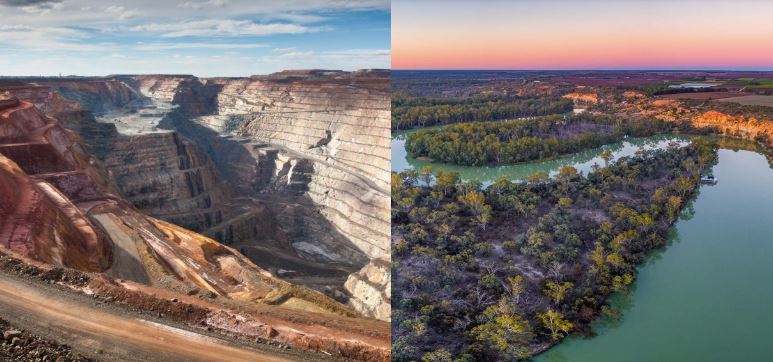
Land restoration, desertification and drought resilient is the theme of this year’s World Environment Day (5 June 2024) – with rising world populations and climate change increasing the risks.
Groundwater supplies between one-fifth and one-third of Australia’s water consumption. It accounts for more than 90% of all water used across almost 50% of Australia’s land area and is the main water source over more than 80% of the country.

To raise the bar, a new model to guide and improve government and industry groundwater research priorities has been issued by the National Centre for Groundwater Research and Training at Flinders University.
“Groundwater is critical to our water, food, and energy security,” says Flinders University Professor Peter Cook, Director of the National Centre for Groundwater Research and Training (NCGRT).
“In Australia, almost one-third of the nation’s irrigation is dependent on groundwater and 38% of our metal ore mining development.
“Groundwater also provides value beyond that derived from its extractive use, as it supports our tourism and forestry industries.
“The health of traditional lands, of which water is an intrinsic and sacred part, is intimately linked to the cultural and spiritual identity of Indigenous People and communities.
“Groundwater also plays a critical role in sustaining ecosystems and maintains springs, streamflow in most of Australia’s perennial streams, and waterholes in ephemeral and intermittent streams, during dry seasons and during droughts.”
Professor of Hydrogeology Peter Cook says significant advances in groundwater science, management and policy have been made over recent decades, but there are several contemporary and emerging challenges that will increase pressure on groundwater resources.
 This why experts in the field, from government, the mining sector, Indigenous water science and academia, have collaborated on the new research priorities publication.
This why experts in the field, from government, the mining sector, Indigenous water science and academia, have collaborated on the new research priorities publication.
The report responds to projections that while Australian population is expected to grow to between 37.4 and 49.2 million by 2066, already one-quarter of Australia’s 288 groundwater management areas are over-allocated.
“Australia is not ready to manage a doubling of groundwater demand within the next few decades without addressing key knowledge gaps,” says Professor Cook.
“Climate change is predicted to reduce groundwater replenishment in many of Australia’s productive agricultural regions further threatening groundwater supplies. Improved science and management will be required to ensure Australia’s food, water and energy security and protect the environment.”
 The groundwater experts describe 18 research priorities to prepare for a growing demand on groundwater due to the joint impacts of climate change, impending El Nino conditions, population growth, an increase in mining, and a shift in Australia’s energy mix. They include:
The groundwater experts describe 18 research priorities to prepare for a growing demand on groundwater due to the joint impacts of climate change, impending El Nino conditions, population growth, an increase in mining, and a shift in Australia’s energy mix. They include:
· Understand the impacts of climate change on groundwater replenishment, water demand, and cropping systems.
- Develop better water infrastructure and management systems that allow us to switch between using rivers, dams and groundwater depending on climatic conditions.
- Create a framework to support explicit groundwater management/allocation to protect Indigenous cultural values.
- Better understand the errors in our models to predict future changes in water availability and how to quantify them.
- Explore the potential productive use of saline groundwater, including the potential to substitute saline water for existing freshwater use in industry and mining.
- Develop methods and materials to support building community knowledge of groundwater and the need to use it sustainably.
The National Groundwater Research Priorities report June 2024 is available online
Compiled by PG Cook, S Richardson, P Baker, O Barron, E Carrara, B Douglas, R Evans, S Hamilton, P McKelvey, B Moggridge, R Nelson, S Pandey, S Papworth, D Robinson, J Searle, Z Thiele, S Trott and R Vertessy (2024) National Groundwater Research Priorities. National Centre for Groundwater Research and Training, Australia.






